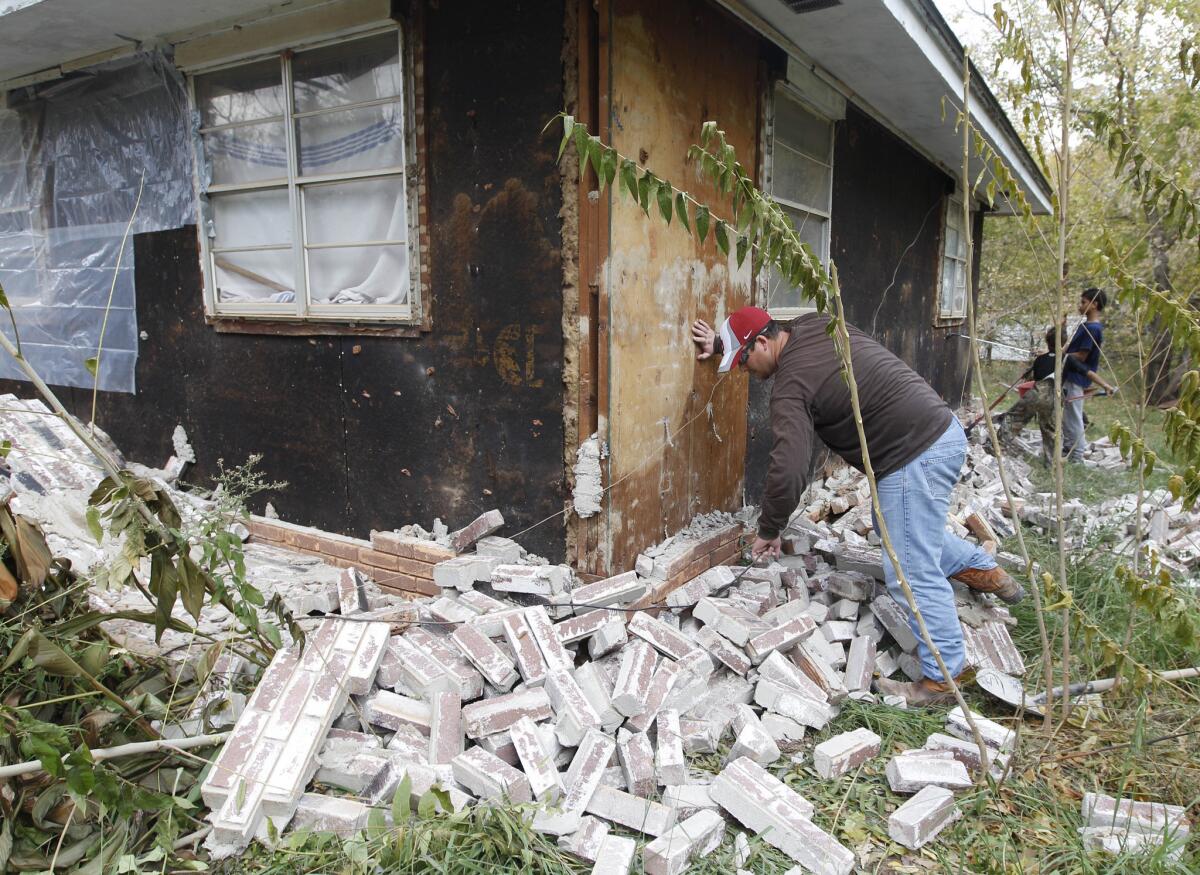Oklahoma earthquakes linked to injection wells

- Share via
HOUSTON -- Oklahoma’s largest-recorded earthquake was triggered by injection wells used by the oil and gas industry, according to a report released this week.
The Tuesday report in the geoscience journal Geology is the latest scientific evidence suggesting injection wells may be causing an uptick in earthquakes nationwide. However, the report was viewed skeptically by Oklahoma’s official seismologist.
The report’s lead author, University of Oklahoma seismologist Katie Keranen, focused on a series of earthquakes in November 2011 near Prague, Okla., including a 5.7-magnitude temblor on Nov. 6, the largest recorded in state history. The quake destroyed 14 homes, buckled pavement and was felt in 17 states, according to the report. Prague lies near a fault line and oil fields where injection wells have been used for decades.
The report suggests that injection-induced earthquakes could be larger than previously thought, and could take much longer periods of time to be triggered.
“This is basically a different class of induced earthquake,” Keranen told NPR.
Keranen’s report, written with Columbia University’s Heather Savage and Geoffrey Abers, and the U.S. Geological Survey’s Elizabeth Cochran — is based on data collected from more than a dozen seismometers in Oklahoma during the so-called “Prague Earthquake Sequence” and data collected by the state’s oil and gas regulator, the Oklahoma Corporation Commission.
More than 1,400 earthquakes were recorded in Oklahoma in 2011, the most active year on record. At the same time, seismic activity also increased throughout the middle of the country, with quakes reported in Arkansas, Colorado, Ohio and Texas.
The same year, regulators in Arkansas banned injection wells from a region that stretches across the state that had been shaken by a series of quakes. Oil and gas regulators in Colorado require review by a state seismologist before permitting injection wells, and Illinois has installed a traffic light system to stop injection wells if related earthquakes appear to put public safety at risk.
But Oklahoma’s official seismologist — the Geological Survey’s Austin Holland — was skeptical about the link between injection wells and earthquakes, as were officials at the Corporation Commission and the Oklahoma Independent Petroleum Assn., a trade group that lobbies for oil and gas companies.
In a statement released by the Oklahoma Geological Survey last week, Holland and state geologist Randy Keller said the Prague Sequence was “the result of natural causes.”
They added that, “Some researchers have observed that the earthquake activity did not increase over time as injection increased, but rather occurred in a distinct ‘swarm’ more typical of a natural event,” the statement said.
ALSO:
Hunters seek to boycott Colorado over new gun control laws
Mother of Tucson killer Jared Lee Loughner took away his shotgun
Tucson shooting: 3,000 pages of sought-after records made public
More to Read
Sign up for Essential California
The most important California stories and recommendations in your inbox every morning.
You may occasionally receive promotional content from the Los Angeles Times.














